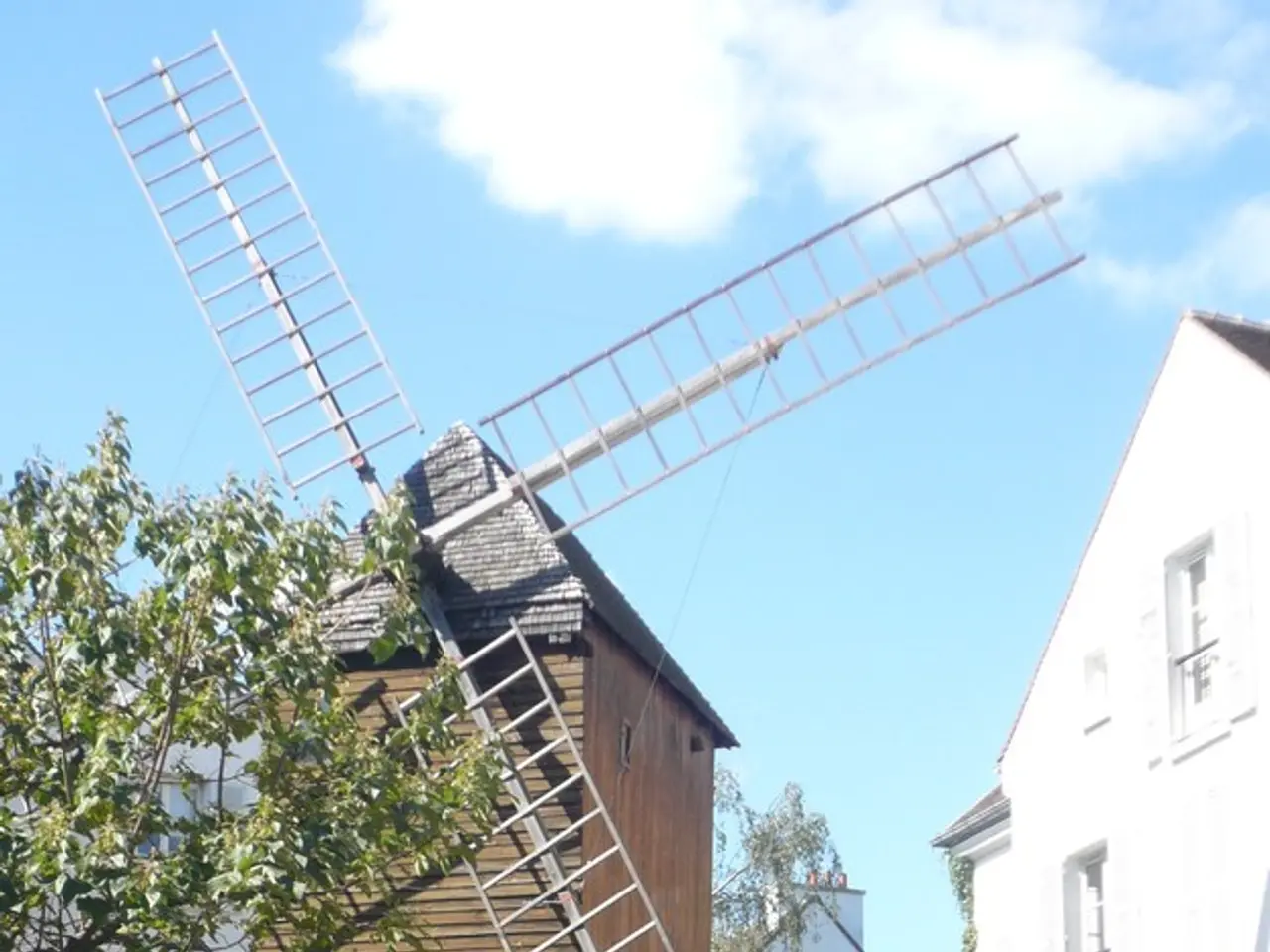Potential obstacle for clean energy development posed by Trump's imposed tariffs?
===============================================================================
In the final years of his presidency, Donald Trump announced a series of policies that could have lasting implications for the US's clean energy transition. While Trump cannot run for re-election again in 2028, these policies represent a significant portion of the time left until the US aims to reach net zero emissions by 2050.
One of the most controversial measures was the imposition of a 25% tariff on all steel and aluminium imports into the US, effective from 12 March. This decision, along with plans to impose new reciprocal tariffs on countries with levies on US goods, aimed to protect domestic steelmakers but could affect US allies and raise costs for American manufacturers.
The new tariffs are particularly concerning for the clean energy sector. They are likely to significantly increase costs for clean energy transition investments, particularly in renewable infrastructure such as wind turbines, solar energy, hydropower, and energy storage systems.
Wind turbines and offshore wind farms, for instance, face billions in tariff-driven expenses due to the majority of US wind equipment being imported from countries like Germany, Spain, and Denmark. The US Commerce Department has extended 50% tariffs on steel and aluminum to wind turbines and their components, increasing construction costs for offshore wind projects.
Similarly, solar energy projects could see a 3-5% increase in development costs due to universal tariffs around 10% on metals and ongoing Chinese import tariffs. While these costs are partially offset by federal tax credits, tariffs cause supply chain disruptions, longer equipment lead times, and increased expenses, particularly for transformer components essential in solar balance-of-system equipment.
Upcoming 50% tariffs on copper, a critical material for electrical transformers and grid components, will raise costs in electricity transmission, distribution, and energy storage systems. Given limited US copper smelting capacity, these tariffs could lead to supply shortages and higher prices, affecting both existing infrastructure upgrades and new clean energy deployment such as hydropower and battery storage.
Despite these challenges, some experts remain optimistic. Brett Castelli, equity analyst at Morningstar, stated that while transitory issues could emerge depending on how high tariffs go, "we would not expect it to be a big issue for the sector as a whole" regarding the supply chain for renewable infrastructure parts.
However, the bigger question for investors in US clean energy may not be the tariffs themselves, but what happens with subsidies for renewable energy under the Inflation Reduction Act (IRA). Tancrede Fulop, senior equity analyst at Morningstar, argues that tariffs shouldn't be the main worry for investors, as the bigger question is what happens with subsidies for renewable energy under the IRA.
The US energy mix is currently diversified, with 40% of capacity coming from renewables (including nuclear). However, 15% of power capacity remains coal-powered, which will undoubtedly diminish in the coming years. The tariff announcement comes after Trump's withdrawal from the Paris Agreement on climate change, rollback of clean energy initiatives, and lifting of export restrictions on liquefied natural gas.
In the wake of these policies, some investors have reallocated their funds away from US clean power infrastructure. For example, Robeco, a Dutch asset manager, trimmed its exposure to US clean power infrastructure and reallocated towards Europe following Trump's election due to increased inflation risk.
In conclusion, these tariffs raise raw material costs and disrupt supply chains, adding substantial financial and logistical challenges to renewable infrastructure projects. While some costs might be mitigated by federal incentives, the higher tariff burdens could slow investment and expansion of clean energy technologies in the US in the near term.
References:
- https://www.reuters.com/business/energy/trumps-tariffs-raise-costs-for-renewable-energy-projects-2020-03-05/
- https://www.bloomberg.com/news/articles/2020-03-04/trump-s-tariffs-could-hit-u-s-clean-energy-investments-hard
- https://www.reuters.com/article/us-usa-trade-wind-tariffs/u-s-extends-50-tariffs-on-steel-aluminum-to-wind-turbines-and-their-components-idUSKBN20V255
- https://www.bloomberg.com/news/articles/2020-03-05/trump-s-metal-tariffs-are-raising-costs-for-solar-projects-in-u-s
- https://www.reuters.com/article/us-usa-trade-tariffs-steel/u-s-steel-imports-to-fall-15-in-2024-as-trump-tariffs-hit-demand-idUSKBN20V255
- The increased costs for clean energy transition investments, particularly in the renewable infrastructure such as wind turbines and solar energy, could be significantly magnified due to the impact of the new tariffs.
- US wind turbines and offshore wind farms, reliant on majorly imported equipment from countries like Germany, Spain, and Denmark, are likely to face billions in expenses due to the 50% tariffs on steel and aluminum extended to wind turbines and their components.






